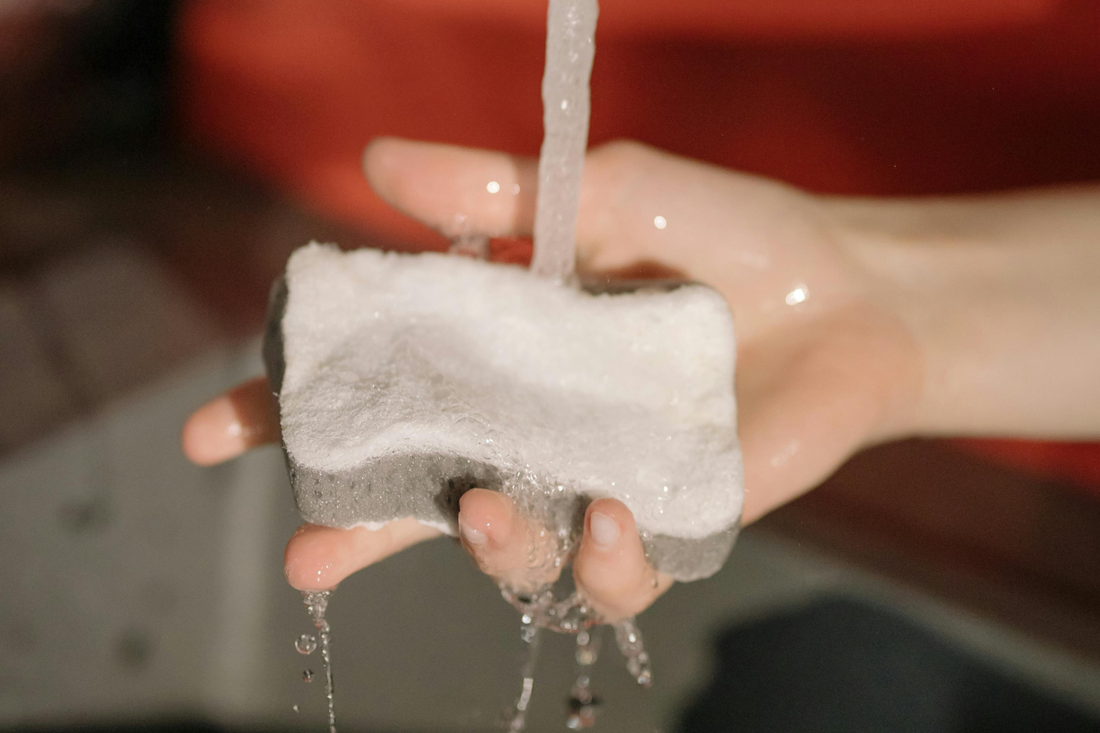
Dirtiest Places in Your Home You Never Knew
Share
As Indians, we take great pride in our clean and tidy homes. However, there are certain areas where dirt, dust, and germs can thrive despite our best efforts, potentially leading to illness. Let’s uncover these hidden germ hotspots and learn some tricks to keep them clean and safe.
The Kitchen: More Than What It Looks Like
- Kitchen Sponge
- Why It’s Dirty: Your kitchen sponge, which is used for washing dishes, can become a breeding ground for bacteria due to its constant exposure to moisture.
- How to Clean: Change your sponge frequently. Microwave it for 2 minutes or soak it in a bleach solution to disinfect it.
- Dishcloths and Towels
- Why It’s Dirty: Damp washcloths and towels can harbour bacteria.
- How to Clean: Always wash them in hot water with bleach. Ensure they are dried completely before reuse.
- Coffee Maker
- Why It’s Dirty: The reservoir and pot of your coffee maker can harbor mold, yeast, and bacteria.
- How to Clean: Mix equal parts vinegar and water in the reservoir, run a brewing cycle without coffee, pause halfway to let the vinegar soak, and then run a clean water cycle to remove any remaining vinegar.
- Cutting Boards
- Why It’s Dirty: Cutting boards, especially those used for raw meat, can look clean but harbor harmful bacteria.
- How to Clean: Regularly clean with hot water and dish soap. Use separate boards for meat and vegetables.
For an extra layer of safety, consider cleaning the kitchen floor with Foamworx Floor Cleaner in Kannauj Rose. Its gentle, non-toxic formula ensures your surfaces are both clean and safe, especially for homes with children and pets
The Bathroom: Outside the Toilet
- Toothbrush Holder
- Why It’s Dirty: Residues from water and toothpaste can make toothbrush holders a breeding ground for bacteria.
- How to Clean: Clean them regularly with hot water and soap, then rinse thoroughly and air dry.
- Showerhead
- Why It’s Dirty: Mineral deposits and bacteria can build up inside your showerhead.
- How to Clean: Descale periodically by soaking in vinegar. Use a brush to remove any stubborn deposits.
- Bathroom Mats
- Why It’s Dirty: Bathroom mats can absorb moisture and harbor bacteria and mold.
- How to Clean: Wash them in hot water regularly and ensure they are fully dry before placing them back in the bathroom.
For deeper cleaning of the toilet seat & bowl, the Foamworx Toilet Cleaner in Madurai Jasmine offers a 3-in-1 deep clean action. Its limescale-dissolving, stain-lifting, and anti-microbial properties keep your bathroom hygienic without the harsh chemicals found in traditional cleaners.
For an extra layer of safety, consider cleaning the bathroom floor with Foamworx Floor Cleaner in Kannauj Rose. Its gentle, non-toxic formula ensures your surfaces are both clean and safe, especially for homes with children and pets.
The Bedroom: A Place of Peace, Not a Germy Zone
- Bedding and Mattresses
- Why It’s Dirty: Dust mites, dead skin, and sweat can accumulate in your bedding and mattress.
- How to Clean: Wash pillowcases and sheets frequently in hot water. Consider using allergen-proof covers for your pillows and mattress.
When doing laundry, using Foamworx Liquid Detergent - Himalayan Wildflower ensures your clothes and bedding are not only clean but also free from harmful chemicals like bleach and dyes. Its non-corrosive formula leaves no residue, keeping fabrics soft and comfortable.
Cleansing Solutions for Your Home
- Establish a Cleaning Pattern: Regular cleaning helps manage hidden dirt and germs. Plan a schedule for cleaning each part of your house systematically.
- Employ Disinfectants: Use disinfectants to eradicate germs from frequently touched areas like doorknobs, light switches, and remote controls.
- Enhance Air Flow: Good air circulation reduces humidity and prevents mold growth. Open windows and use exhaust fans for proper ventilation.
-
Practice Laundry Hygiene: Wash your bedding, towels, and dishcloths in hot water to kill germs. Dry them completely to prevent mold or bacterial growth.
Both Foamworx Top Load and Front Load Liquid Detergents are excellent for maintaining laundry hygiene. Their hypoallergenic fragrances and natural conditioners ensure your fabrics remain soft and safe for the entire family. - Stop Cross-Contamination: Wash your hands frequently, especially after touching high-contact surfaces. Use different rags and sponges for different tasks to prevent the spread of germs.
- Make Your Own Cleansers: Natural cleaning agents like vinegar, baking soda, and lemon juice can effectively clean various surfaces without the need for harsh chemicals.
- Change Items Regularly: Replace sponges and dishcloths regularly to prevent the buildup of bacteria.
- Pay Attention to Small Areas: Clean often-neglected areas like toothbrush holders, remote controls, and light switches for a truly clean home.
Conclusion
Paying attention to these often-overlooked areas can significantly improve the cleanliness and safety of your home. Remember, a truly clean home isn’t just about what you can see—it’s about creating a healthy, germ-free environment for you and your loved ones.
13 Dirtiest Places in the Home—Plus Expert Tips for How to Clean Them (rd.com)
The 9 Dirtiest Places in Your Home: Find Out Where the Germs Live (healthline.com)
The 12 Dirtiest Places in the Home (and How to Clean Them) (bhg.com)
